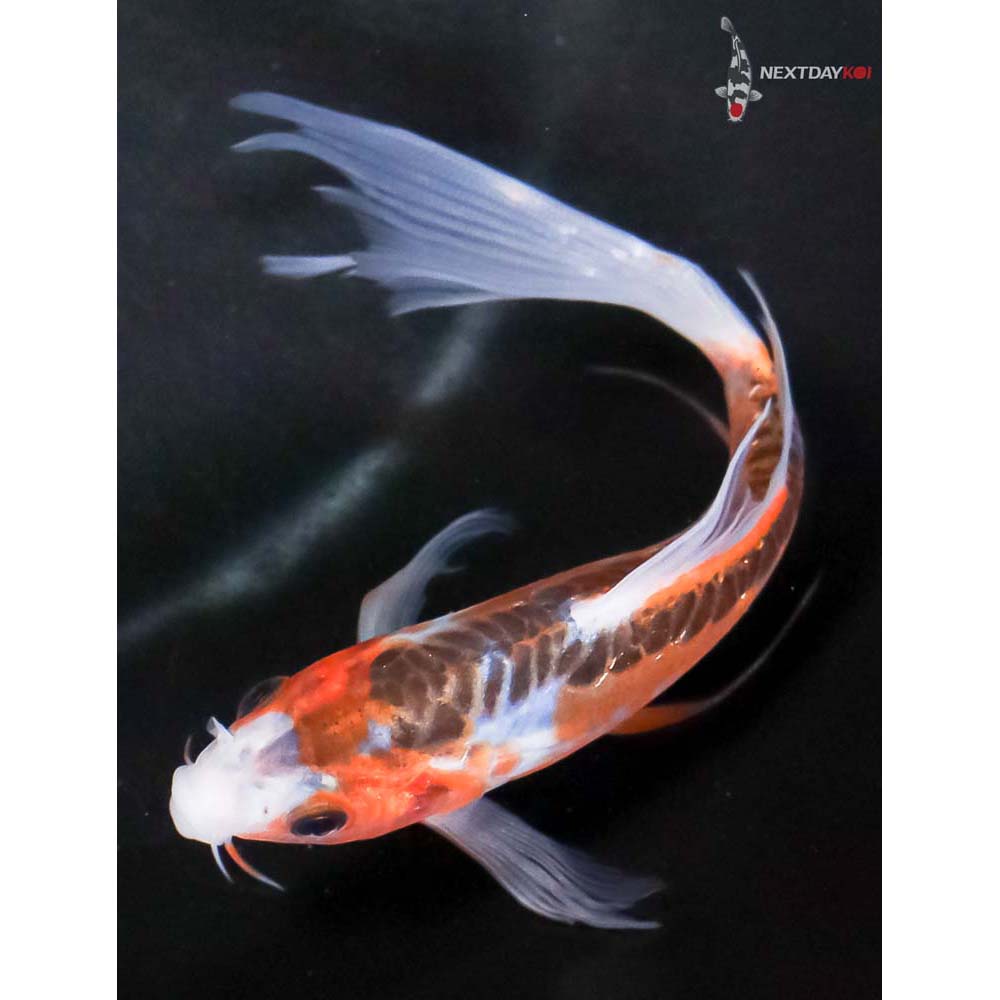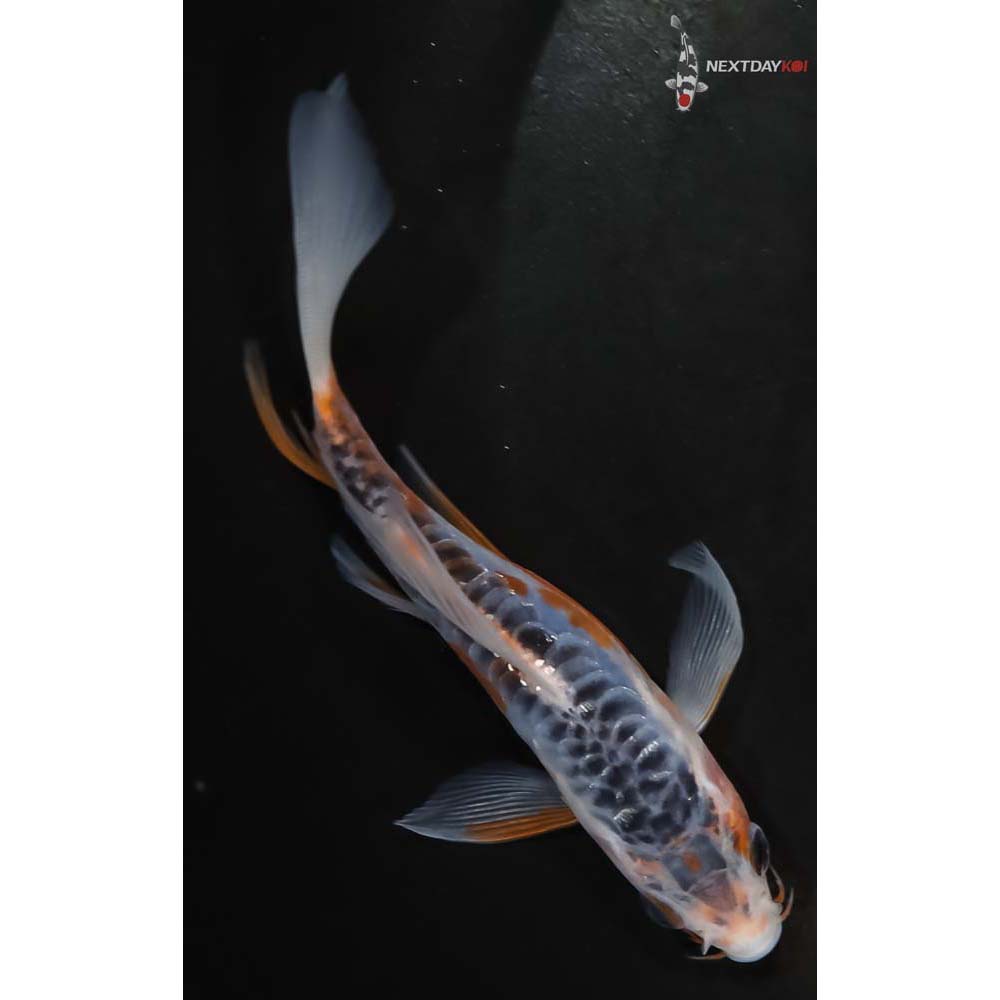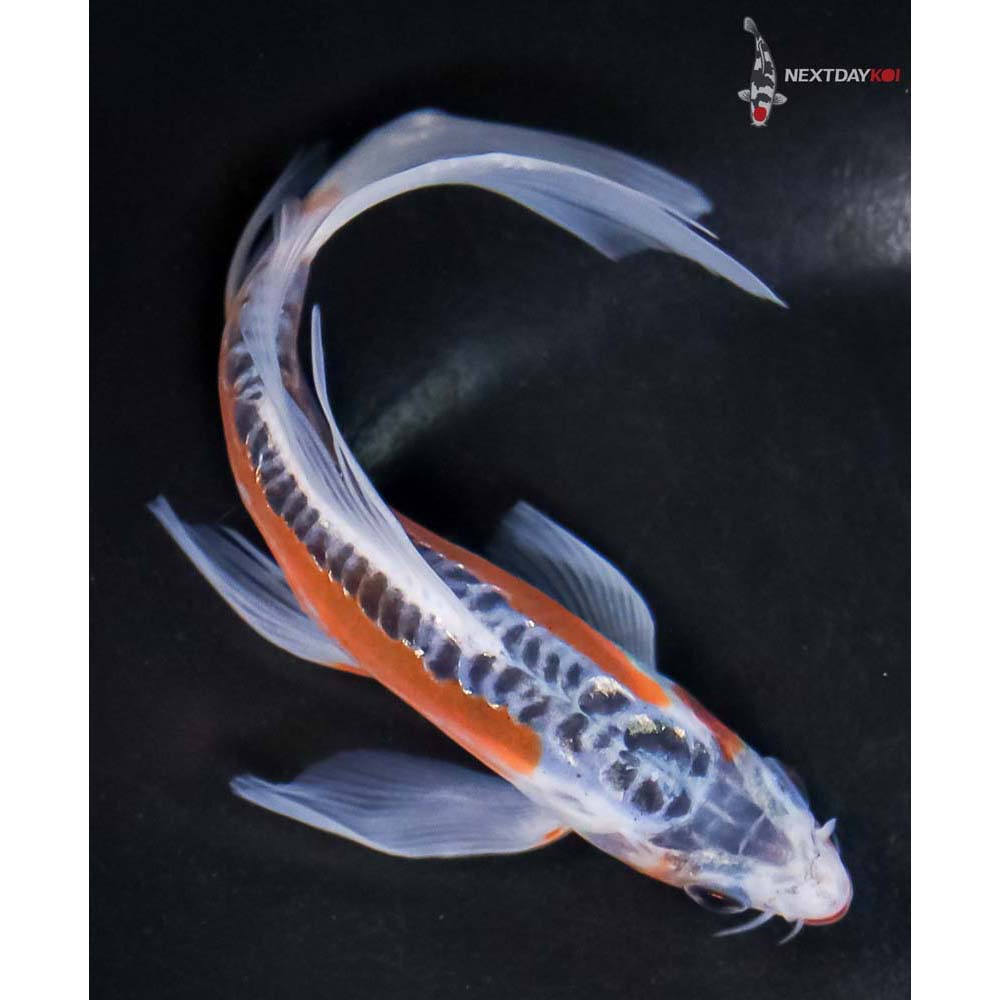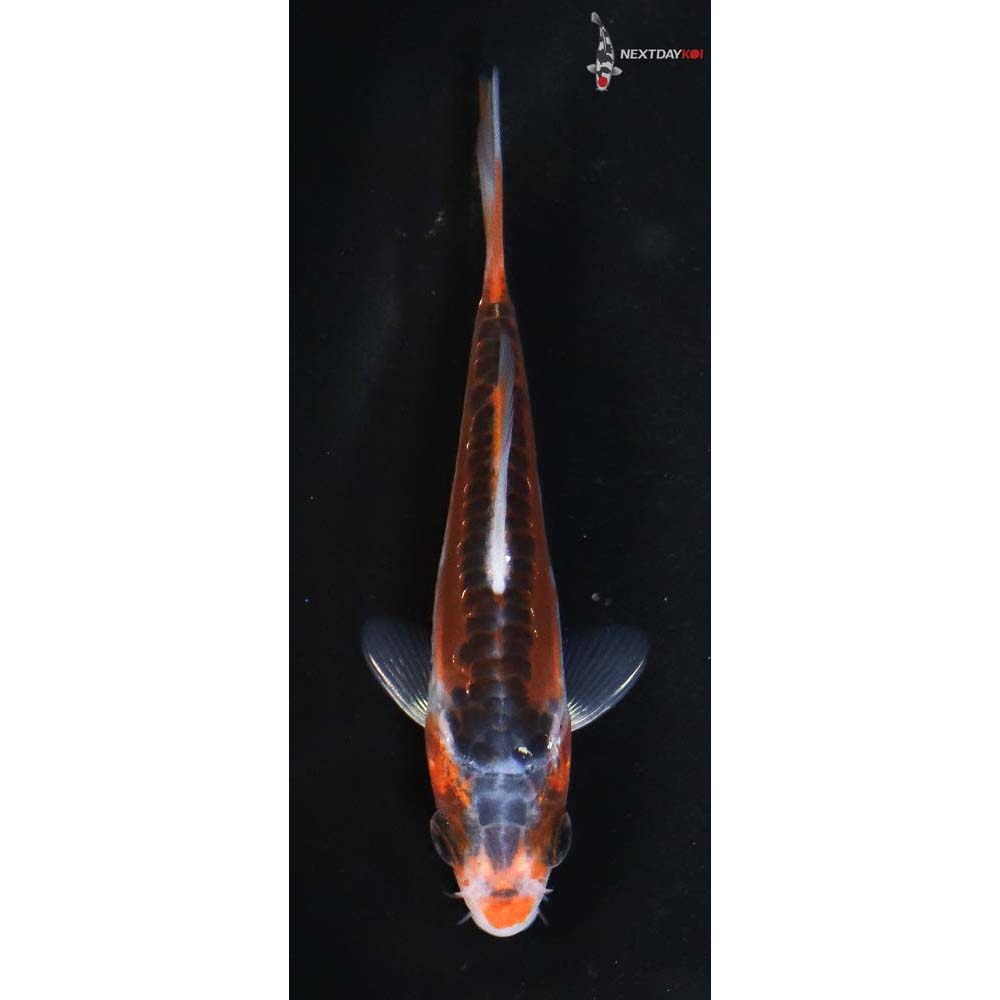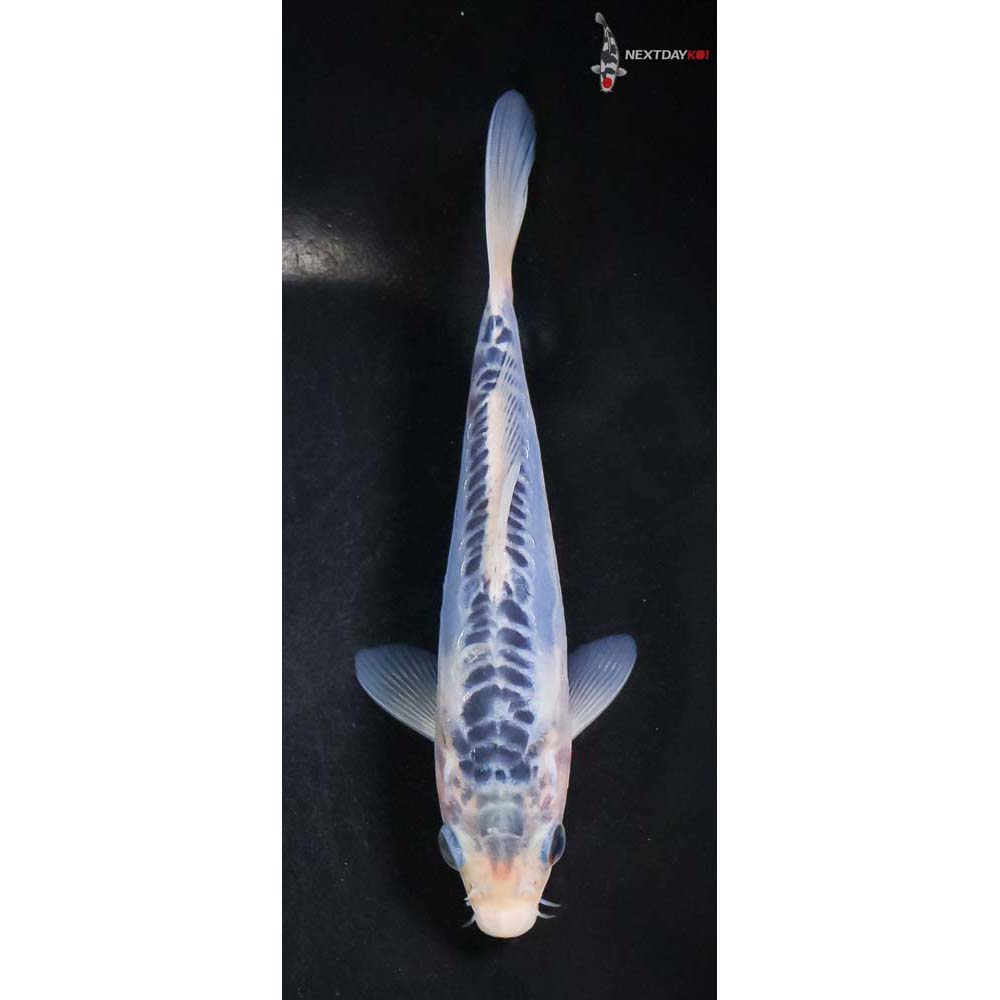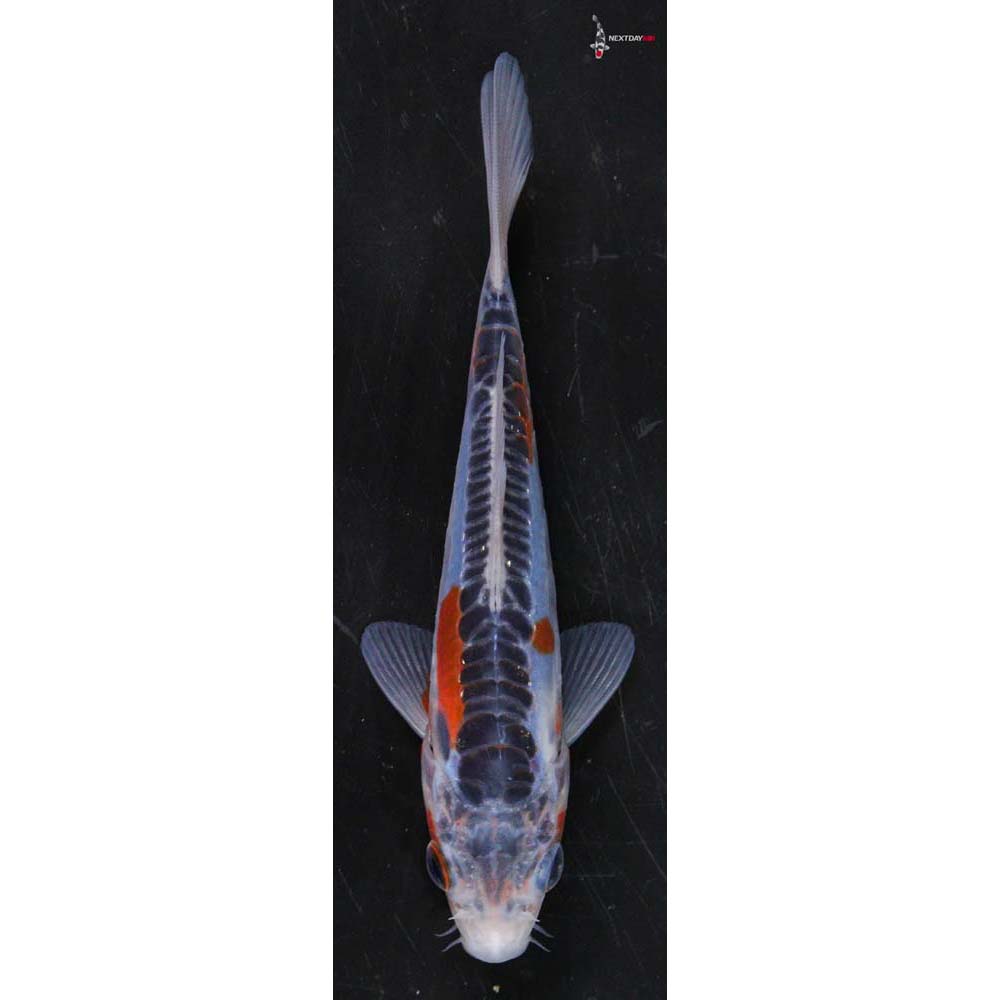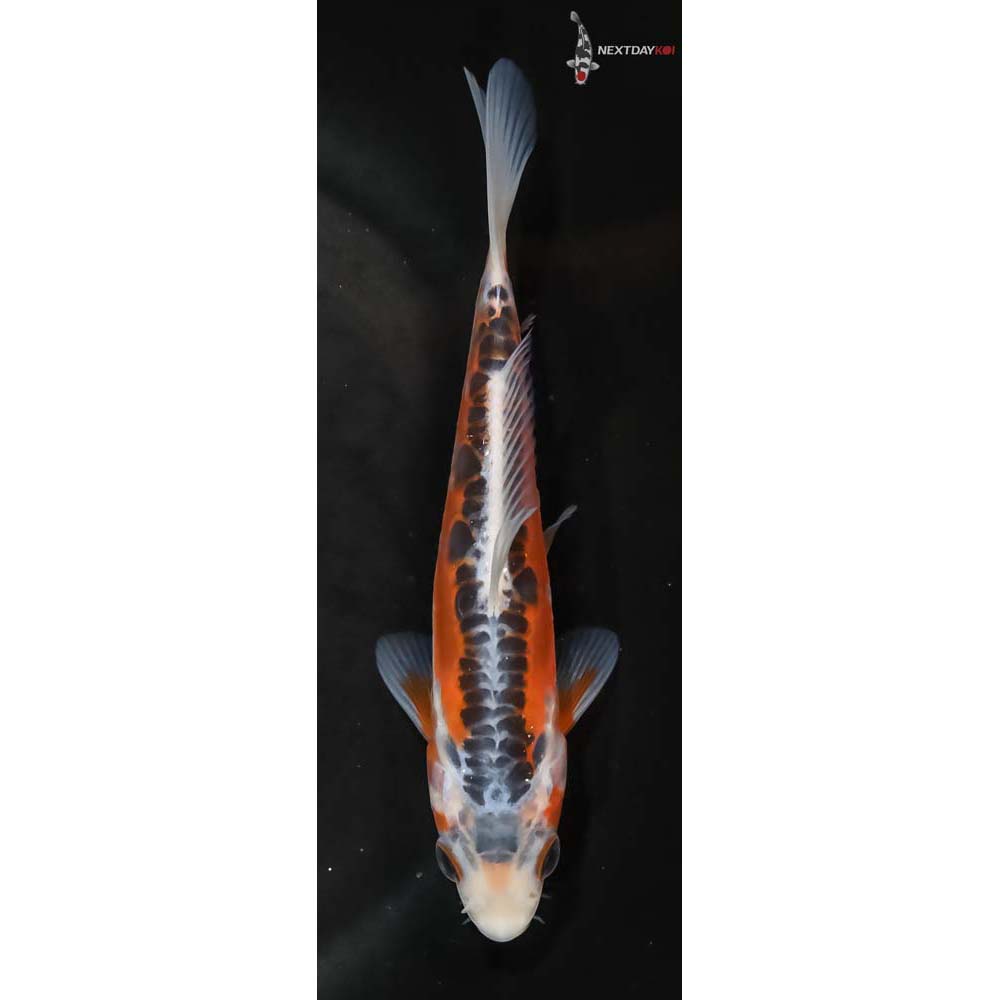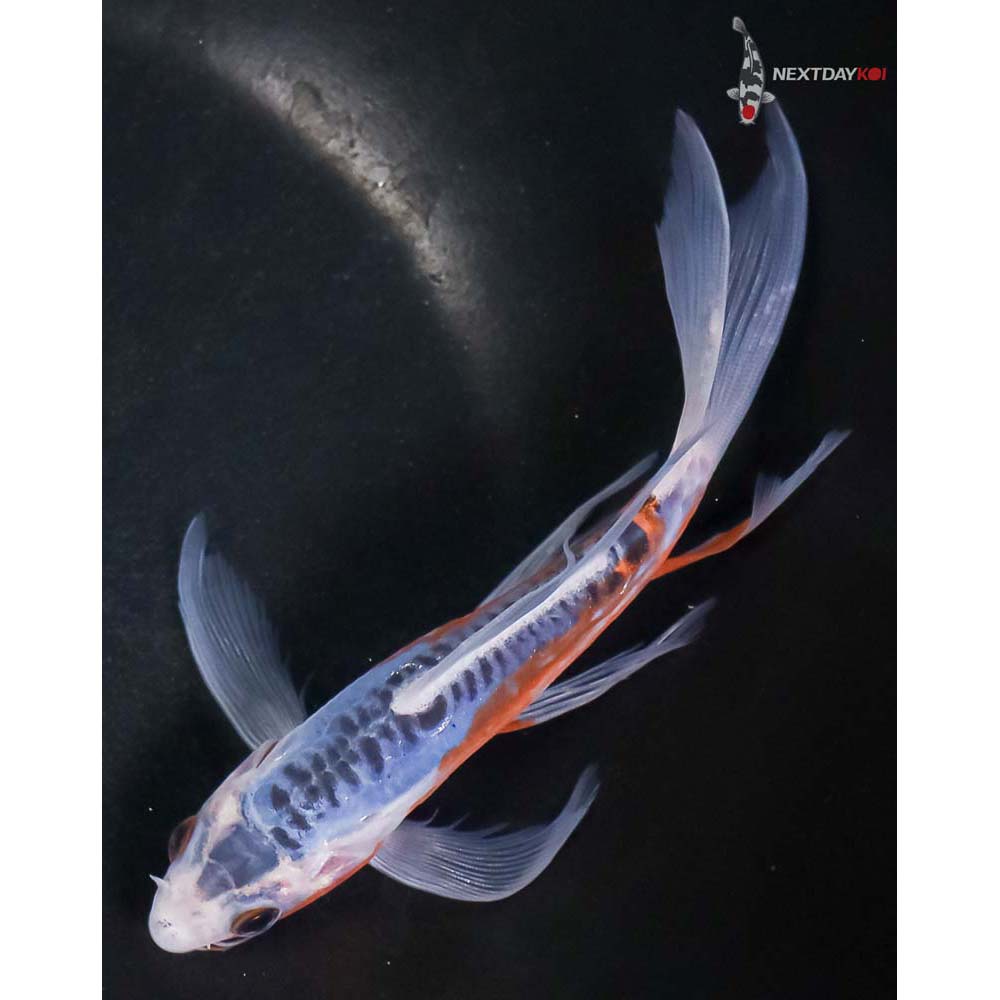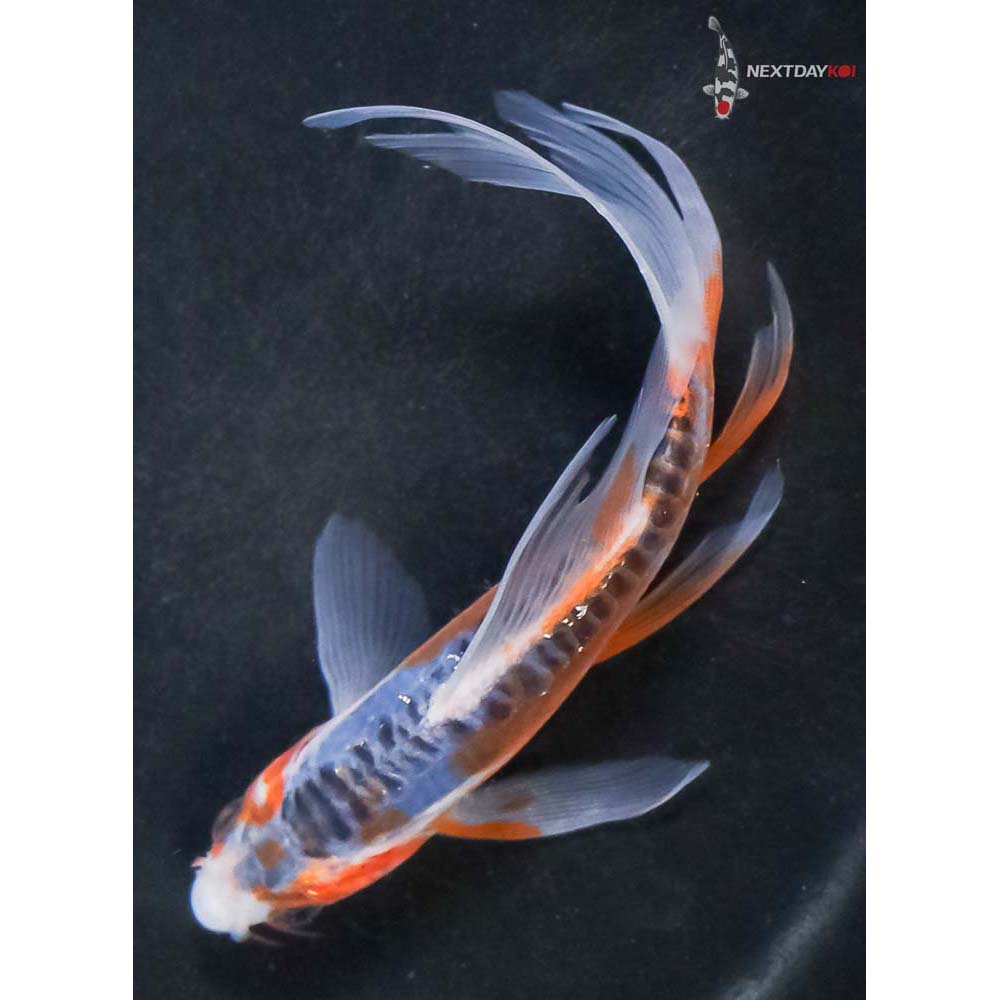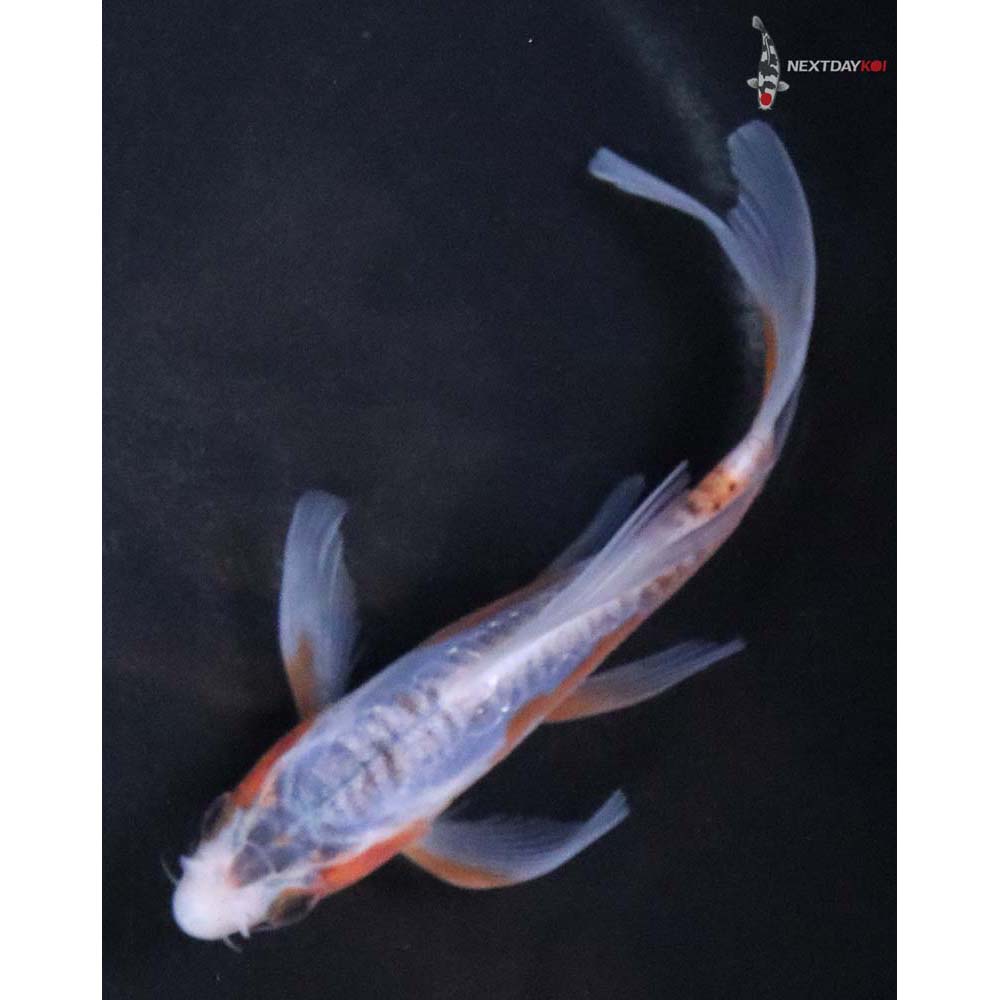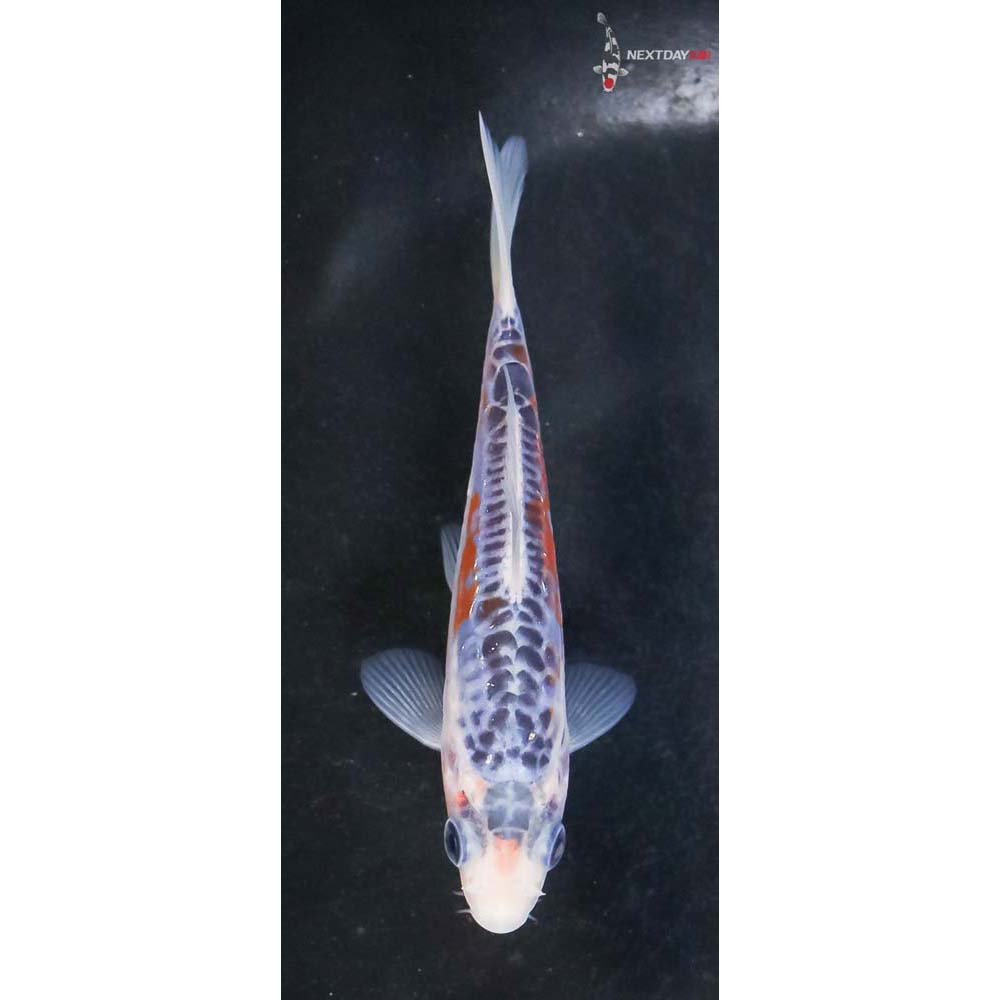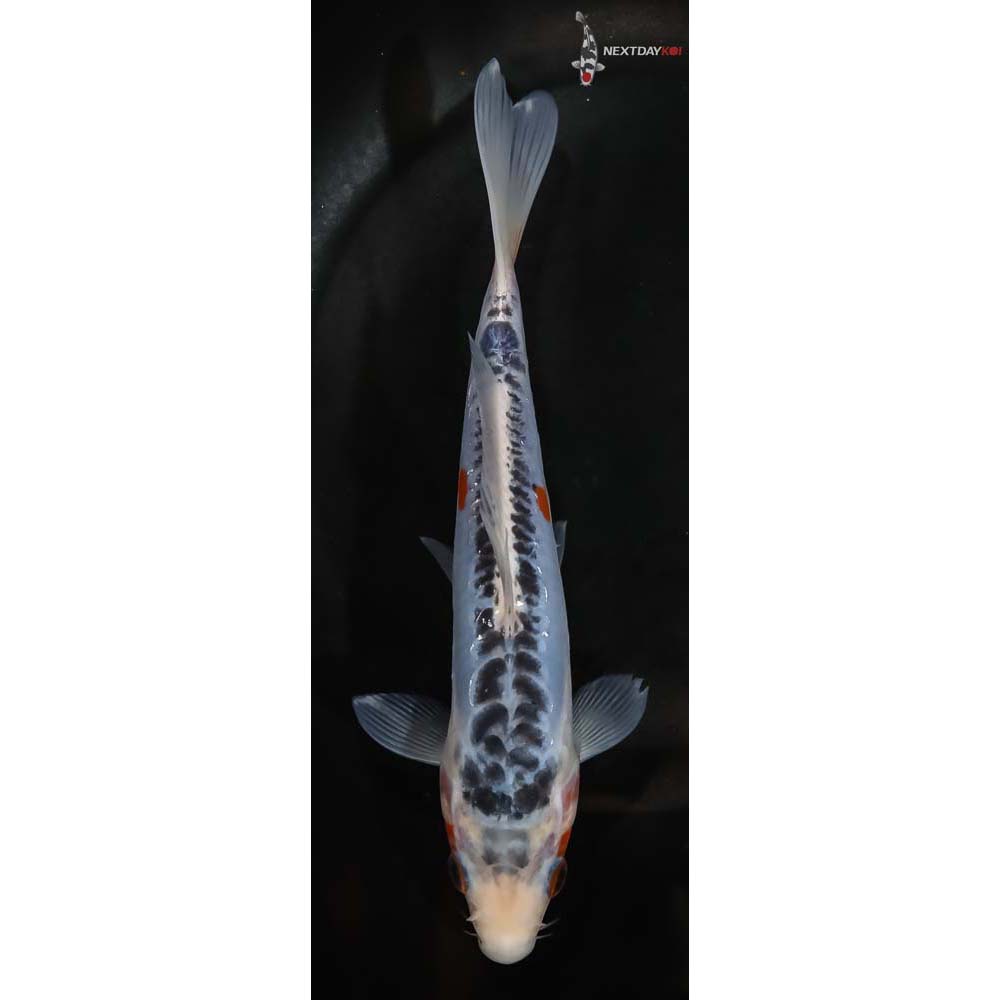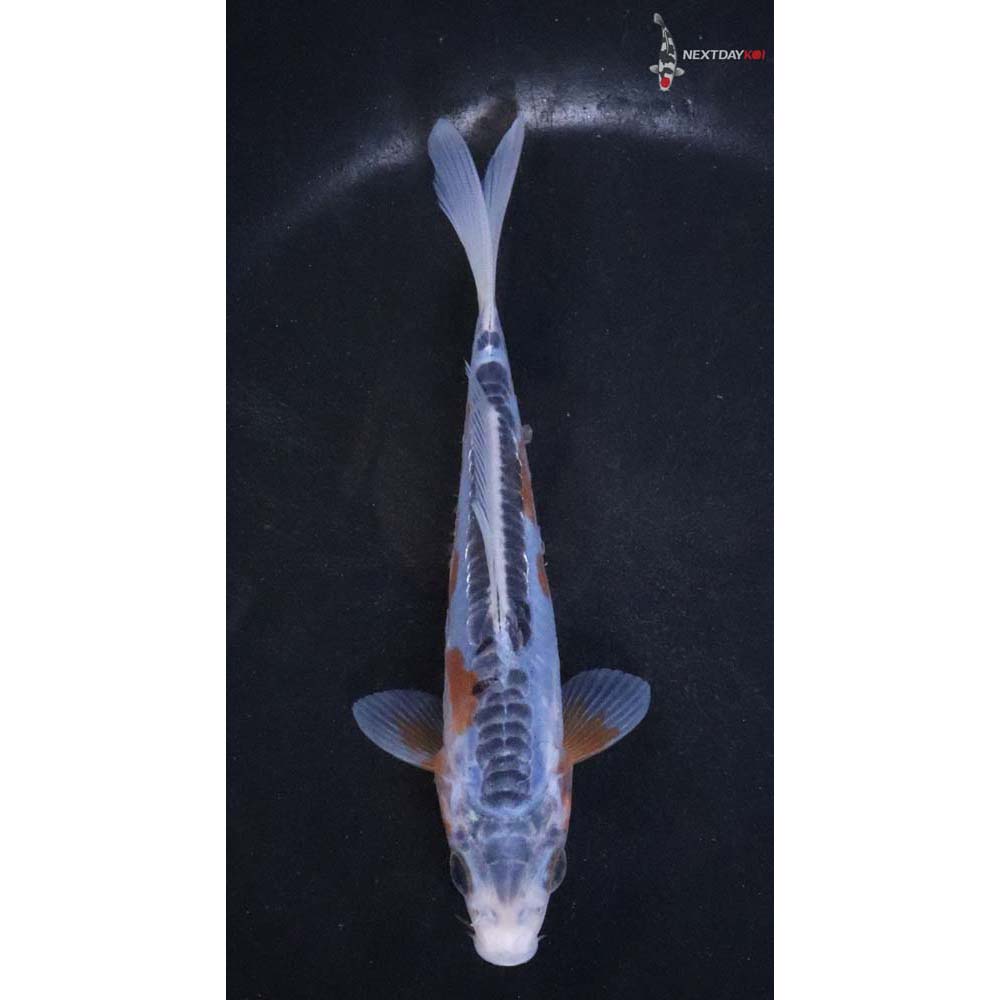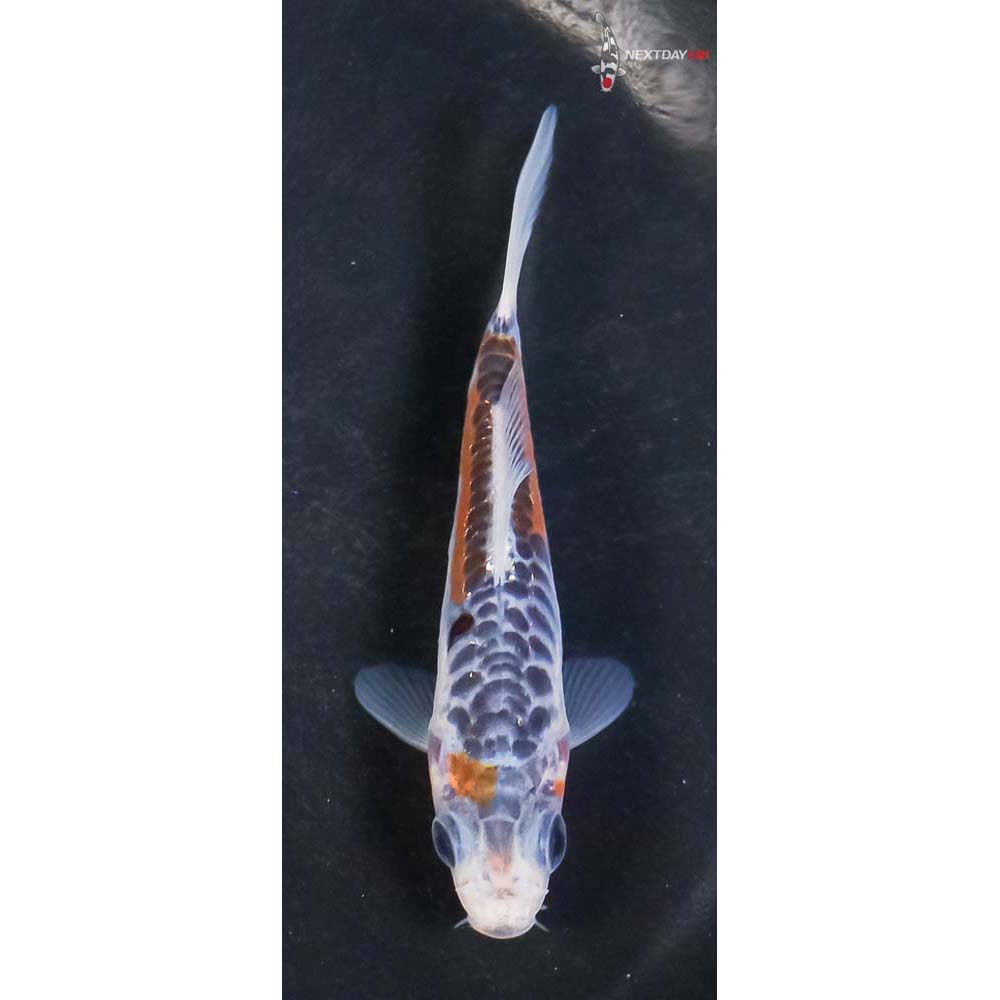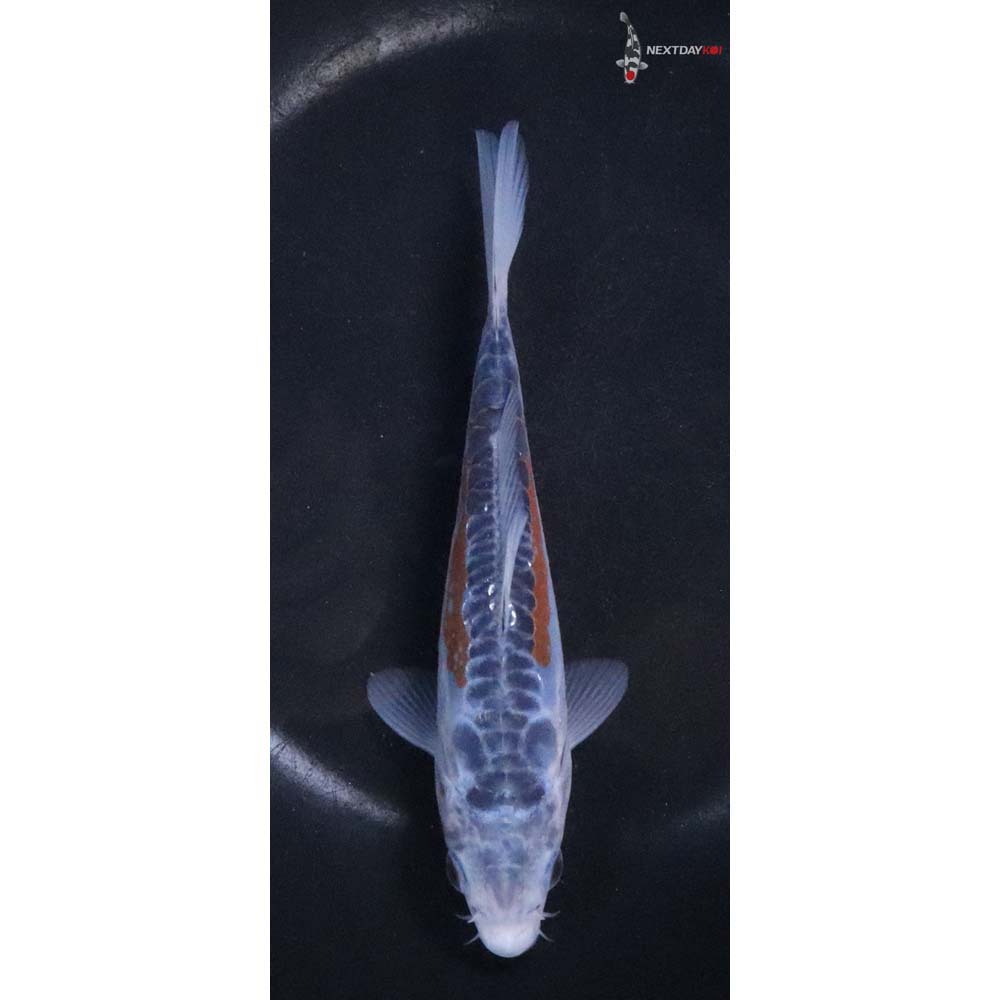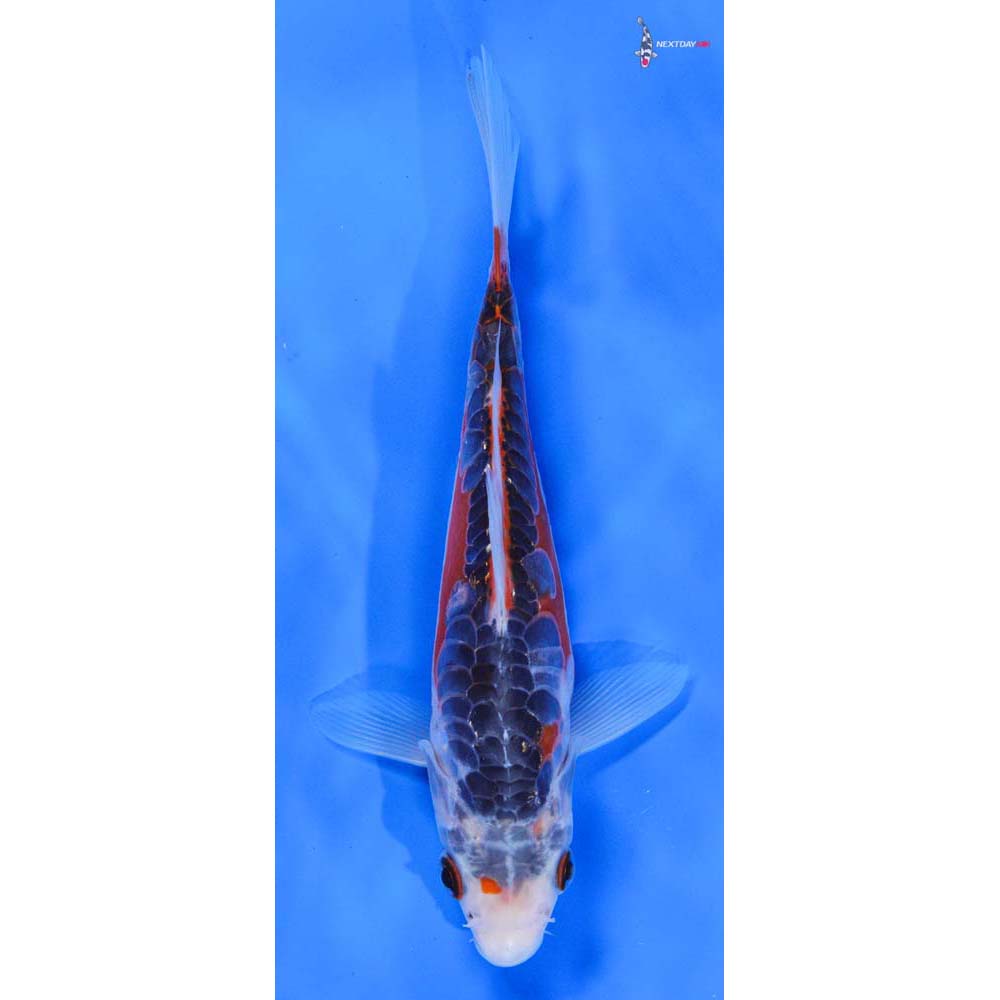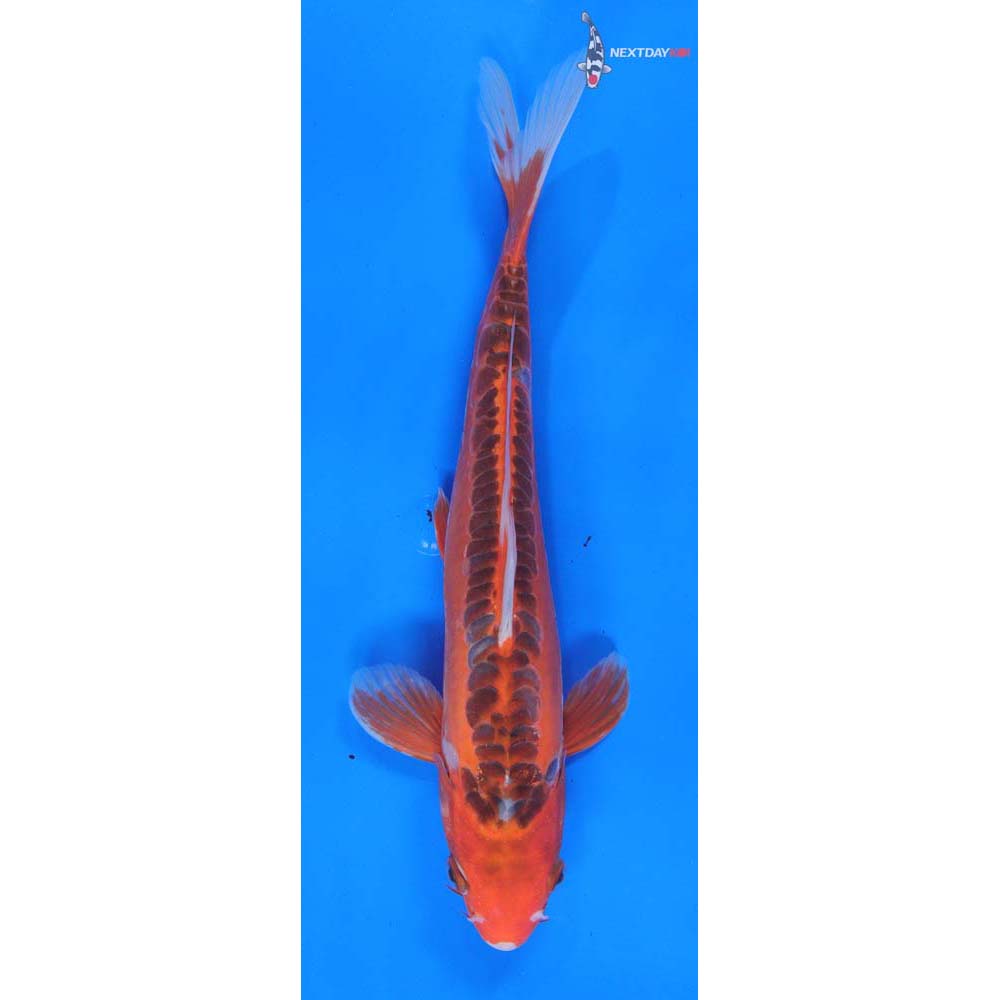What To Look For
The most important aspect of the appearance of Shusui is the row of scales that run down the dorsal line. In the highest quality Shusui, the row of scales begins just behind the head and is formed by lines of two identical scales side by side, which split onto either side of the body at the front of the dorsal fin, then rejoin into a single line of scales at the back of the dorsal fin. Shusui may or may not have a secondary row of smaller scales along the lateral line.
Similar to Asagi, the hi is an orange-red or rust-colored red that is darker and more subtle than the bright, vibrant hi generally found in Kohaku, Sanke and Showa. The hi should compliment the row of scales down the back, and should appear on the gill plates and shoulders, but not on the head. Some Shusui exhibit a desirable trait known as “motoguro”, patches of hi that begin at the base of the pectoral fins and spread outward over part of each pectoral fin.
Shusui differ from Asagi in regards to red above the lateral line. While red above the lateral line is considered a fault in Asagi, it is generally desirable in Shusui. Some sub-varieties of Shusui are determined by the placement of the hi above the lateral line.
The highest quality quality Shusui have a bluish-gray colored head that is clear and free of any blemishes or marks. However, a truly perfect Shusui head is very rare. The skull will almost always be visible through the head of young Shusui (10″ or less in length). When examining young Shusui, look at the nose area. If the nose area is clean and blemish free, then the rest of the head will generally clear up with age, and the visible skull will disappear from view.

